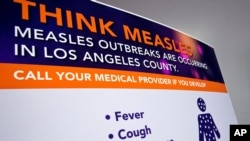Thirty-three new cases of measles were reported last week, with 1,077 active cases total within the United States, according to health officials — the worst outbreak in over 25 years, when 2,126 cases were recorded in 1992.
Nearly 30 states have reported cases, with outbreaks of over three cases ongoing in California, New York, Pennsylvania and Washington state. New York’s Rockland County declared a state of emergency in late May, over a measles outbreak in an ultra-Orthodox Jewish community.
Measles was declared eradicated within the U.S. in 2000, four decades after elimination was first announced as a goal. A disease is considered eliminated when a full year passes with no active transmissions. If the current outbreak isn’t under control by October 2019, the U.S. will lose its measles elimination status.
“That loss would be a huge blow for the nation and erase the hard work done by all levels of public health,” the Centers for Disease Control (CDC) said in a press release last month. “Before widespread use of the measles vaccine, an estimated 3 to 4 million people got measles each year in the United States, along with an estimated 400 to 500 deaths and 48,000 hospitalizations.”
According to the agency, most cases are being spread by unvaccinated school-age children. Communities with low rates of vaccination create pockets through which the disease can easily be spread.
“I want to reassure parents that vaccines are safe, they do not cause autism,” said CDC Director Robert Redfield, M.D., in the press release. “The greater danger is the disease the vaccination prevents.”
Travel from countries where measles is common, especially Ukraine, Israel and the Philippines, is also contributing to the U.S. outbreaks, according to the Associated Press.










